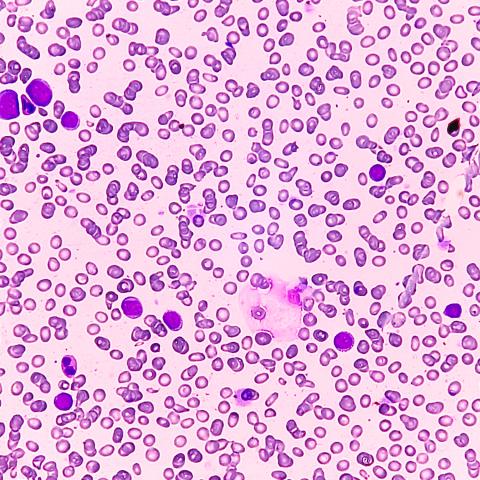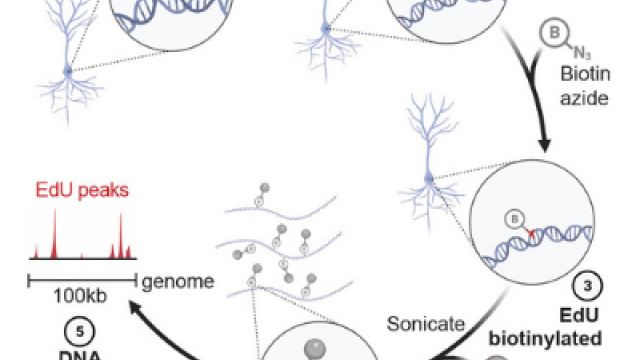
Acute myeloid leukemia. Image credit: iStock
New research from CCR scientists explains why some neurons in the brain are impaired by Ara-C, a chemotherapy drug used to treat blood cancers, which results in movement and balance problems for some patients. Led by Andre Nussenzweig, Ph.D., Chief of the Laboratory of Genome Integrity, the researchers have learned how Ara-C causes highly disruptive DNA damage in neurons and which brain cells are most vulnerable to the drug. Their study, reported June 25, 2025, in Nature, also found that damage to DNA is less severe when neurons are exposed to a related drug called gemcitabine.
Ara-C, also known as cytarabine, is used to treat certain blood cancers. It was first approved by the FDA in 1969 and has remained a mainstay of treatment for acute myeloid leukemia (AML). Ten to 25 percent of patients who receive high doses of the drug experience neurological side effects due to damage to the cerebellum, a part of the brain that plays a crucial role in coordinating movement, balance, posture and motor learning.
The cause of these side effects has been a mystery, because like other chemotherapies, Ara-C acts primarily on actively dividing cells—and mature neurons do not undergo cell division.
The drug, whose structure resembles one of the essential building blocks of DNA, called cytosine, is incorporated into newly synthesized DNA. This stalls the replication process and prevents cancer cells from dividing.
Neurons have no need to copy their DNA in preparation for cell division, but Nussenzweig and colleagues have found that they do routinely remove and replace some of the cytosines in their DNA as part of a process called DNA demethylation. This process is particularly active in the neurons in the brain’s cerebellum that are most affected by Ara-C: the Purkinje cells, which are vital for coordinating the body’s movements.
In the new study, Nussenzweig’s team showed that incorporating Ara-C into DNA during demethylation leads to breaks across both strands of the DNA molecule. Double-strand breaks, Nussenzweig said, are "the worst thing that can happen to DNA." His team showed in mice that Purkinje cells, in particular, experience a lot of double-strand breaks during treatment with Ara-C. This dramatically disrupted gene regulation in the cells, impacting many genes involved in movement control.
Gemcitabine, a chemotherapy used to treat many cancers, works similarly to Ara-C. Like Ara-C, it resembles cytosine and kills cancer cells when it is incorporated into newly synthesized DNA. But when neurons incorporate gemcitabine into their DNA during demethylation, the damage is less severe. “We found that Ara-C causes toxic double-stranded DNA breaks in neurons, whereas gemcitabine causes not-so-toxic single-stranded breaks,” Nussenzweig explained.
Historically, gemcitabine has not been used to treat AML, but the new findings suggest that swapping Ara-C for gemcitabine might benefit patients. “They're both cytosine analogs, but Ara-C causes cerebellar dysfunction and gemcitabine has no known neurological side effects,” Nussenzweig said. “Our proposal would be that you could kill the AML just as effectively with gemcitabine, but you wouldn't generate the problem in the cerebellum.”


